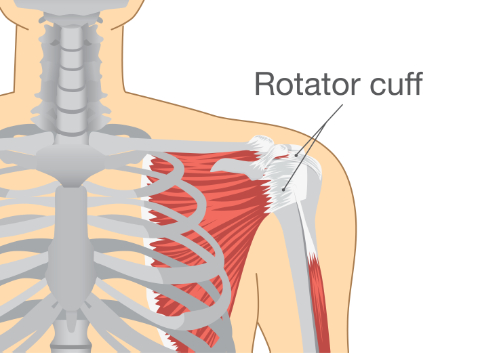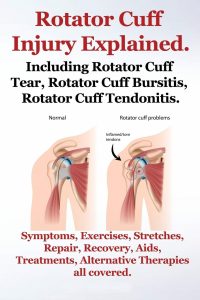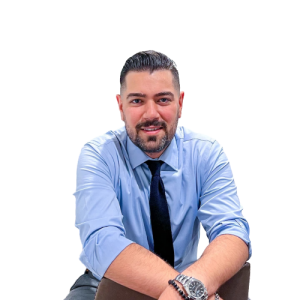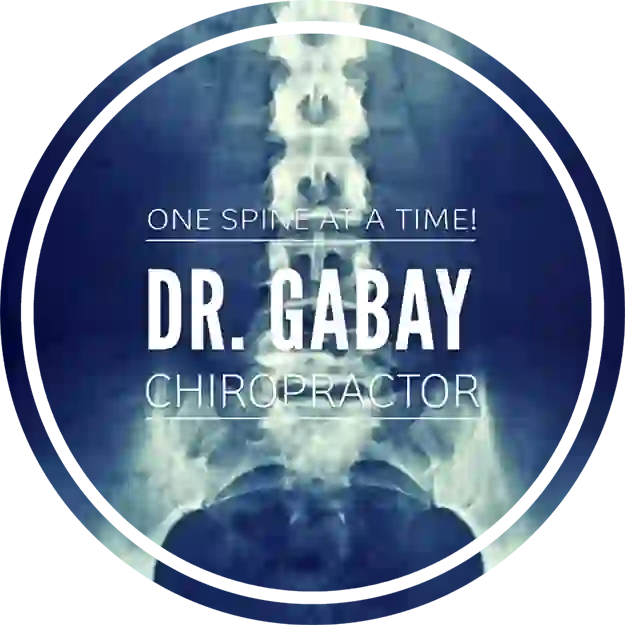What is a rotator cuff?
The rotator cuff is a collection of tendons and muscles that support the shoulder joint and stabilize it so you can move your arm in all directions with ease. When you have pain, weakness, or problems moving your shoulder because of injury to this area, you may be suffering from rotator cuff problems. Your family chiropractor can help you treat these injuries and get back to normal activities like playing sports or working around the house as soon as possible while also explaining how to prevent them from coming back in the future.
General information
 The rotator cuff is a group of four muscles and their tendons. Three of these muscles—the supraspinatus, infraspinatus, and teres minor—wrap around your shoulder blade, or scapula. The fourth muscle—the subscapularis—lies beneath them and attaches to your upper arm bone.
The rotator cuff is a group of four muscles and their tendons. Three of these muscles—the supraspinatus, infraspinatus, and teres minor—wrap around your shoulder blade, or scapula. The fourth muscle—the subscapularis—lies beneath them and attaches to your upper arm bone.
The function of your rotator cuff is to help lift and rotate your arm forward. For example, when you’re at the kitchen sink washing dishes, you use your rotator cuff to lift a plate up out of soapy water before setting it down on a rack. You also use it to reach over your head for something on top shelf in a closet.
Rotator cuff pain occurs when any one or more of these muscles become strained from repetitive activities, sports injuries, falls, or old age. It can feel like mild aches and pains in your shoulder or as sharp shooting pains (which may radiate into your arm) that get worse with activity but are better with rest.
At its worst, rotator cuff syndrome can make lifting even small items very painful; doing simple things like combing hair can be impossible if you have severe pain due to injury.
Causes of Rotator Cuff Injuries
 Rotator cuff injuries occur when there is too much wear and tear on your shoulder, causing tendons to become inflamed. This can happen as you age or if you have other conditions that affect your bones and joints.
Rotator cuff injuries occur when there is too much wear and tear on your shoulder, causing tendons to become inflamed. This can happen as you age or if you have other conditions that affect your bones and joints.
Osteoarthritis and rheumatoid arthritis are two examples of conditions that can lead to rotator cuff problems. Your genetic makeup also plays a role in how quickly you’ll experience joint degeneration and pain. Certain physical activities are particularly likely to cause an injury. Sports involving overhead motion—such as tennis, golf and swimming—and weight training with high repetitions increase your risk for tendon inflammation.
People who suffer from muscle imbalances are also at greater risk for developing rotator cuff issues; scoliosis, back issues and leg-length discrepancies can all cause weak muscles in one area while putting stress on surrounding areas.
If you’re experiencing any kind of repetitive movement syndrome, such as frozen shoulder syndrome or carpal tunnel syndrome, make sure to consult your doctor about its potential effects on your shoulders. It may be wise to rest until symptoms subside before resuming exercise programs. If pain doesn’t go away within three months of treatment (with physical therapy or medications), surgery may be necessary to repair damaged tissue in order to restore mobility and relieve pain.
Common Symptoms
The most common symptom of rotator cuff damage is pain in your shoulder area. It can feel like an ache, tingling or burning sensation, depending on its severity. If you have weak muscles in your arm, particularly around your elbow, you may also feel weakness when performing tasks. Other signs of rotator cuff damage include extreme swelling and bruising near your shoulder area. You may notice clicking or popping sounds if you move certain ways as well.
Risk Factors
There are many reasons you might experience pain in your shoulder. Factors such as age, physical activity level, and medical history can play a role in shoulder pain. Injury and wear-and-tear can also contribute to shoulder pain.
If you’re experiencing pain, consider what activities you were doing at the time of injury to assess risk factors. For example, if your job involves heavy lifting or prolonged periods of sitting, there may be extra stress on your shoulders.
Certain types of injuries increase risk for related problems later on; for instance, an injury to one part of your body can make you more susceptible to other injuries. In addition, certain medical conditions raise risk; if you have diabetes, arthritis or high blood pressure, consult with a doctor about preventing future issues.
A condition called impingement syndrome occurs when certain tendons under your shoulder joint rub against bones and cause pain. To diagnose impingement syndrome, your chiropractor will examine your posture, range of motion and flexibility before performing a series of manual tests to determine which tendon or tendons are causing discomfort.
Treatment Options
In chiropractic, we have many treatment options for your shoulder pain. If you’re suffering from any symptoms of a rotator cuff injury, such as pain and weakness when lifting your arm or swimming and other sports activities, it’s important to get an examination from your local chiropractor to see what you can do to prevent further damage. Chiropractic care can also be used after an injury has already occurred in order to help speed up recovery and get back into normal activities as soon as possible.
There are various tools that we may use to achieve these results including: adjustments, massages, mobilizations and electrical muscle stimulation techniques. We may recommend certain exercises and stretches to accompany your rehabilitation program while you are under our care or that you may perform at home on your own time as well if appropriate.
These techniques can help to reduce your pain and keep your shoulder functioning normally, allowing you to enjoy daily activities with minimal discomfort or disability. If you have any questions or concerns about chiropractic treatment, schedule an appointment with our office today.
Home Exercises
Some of these exercises can be done at home. Consult with your doctor before starting any new fitness regimen, though. Exercises for your rotator cuff should not cause pain in other areas of your body, such as your neck or back. If you experience pain, stop doing those exercises and contact a chiropractor or physical therapist immediately to figure out what’s wrong.
Chiropractic Care for Rotator Cuff Injuries
Many people suffer from rotator cuff injuries. If you’re experiencing pain in your shoulder, you may have injured your rotator cuff. When rotator cuffs get injured, they can be slow to heal and sometimes lead to chronic pain issues that last for years. Finding help with a specialist such as a chiropractor is key when dealing with these kinds of problems.
Chiropractic care uses non-invasive methods to fix soft tissue damage in your body. The aim of chiropractic care is to correct misalignments in your spine that may have led to muscle spasms or nerve pinching that impact other areas of your body, such as your shoulder. Your chiropractor can determine if you are suffering from these issues through comprehensive exams and diagnostic testing procedures.
A typical course of chiropractic care for rotator cuff injuries involves several visits to your chiropractor. Each appointment will last about an hour and consist of soft tissue therapy, as well as diagnostic procedures that are used to determine where in your body your injury occurred. Once you’ve pinpointed its origin, your chiropractor can then work to treat it through soft tissue manipulation and other therapies that promote healing.
 We at Nariman M. Gabay, leading Rotator Cuff Injuries Chiropractor provide the best solution for Rotator Cuff Injuries with proven results- all without surgery or drugs! Our office in Encino can help you feel better again within just one visit so call today (818) 925-8184 website address: www Dynamicmedchiro com info about our services that are designed specifically around your needs and wants which ensure success because every person is different when they come here .
We at Nariman M. Gabay, leading Rotator Cuff Injuries Chiropractor provide the best solution for Rotator Cuff Injuries with proven results- all without surgery or drugs! Our office in Encino can help you feel better again within just one visit so call today (818) 925-8184 website address: www Dynamicmedchiro com info about our services that are designed specifically around your needs and wants which ensure success because every person is different when they come here .
To get Quality Chiropractic Treatment for rotator cuff injuries Near you in Encino, CA. Call us at (818)925-8184 and make an appointment today!
